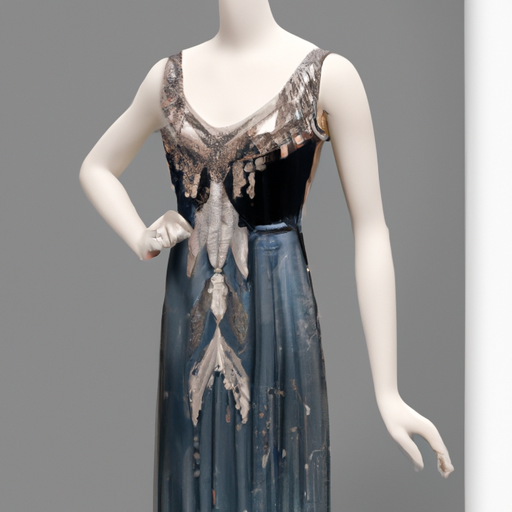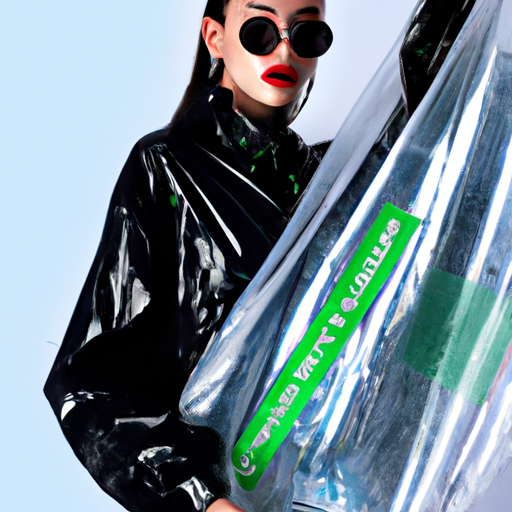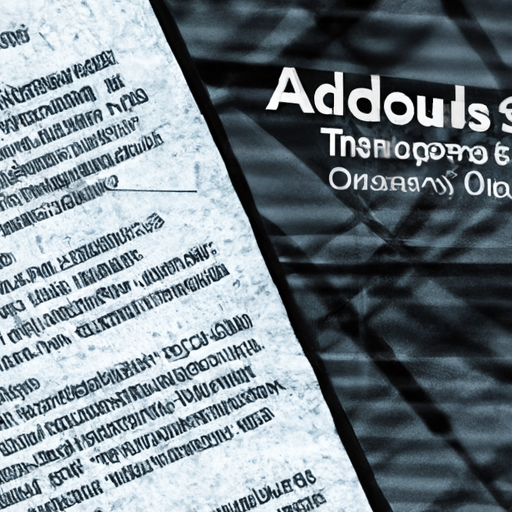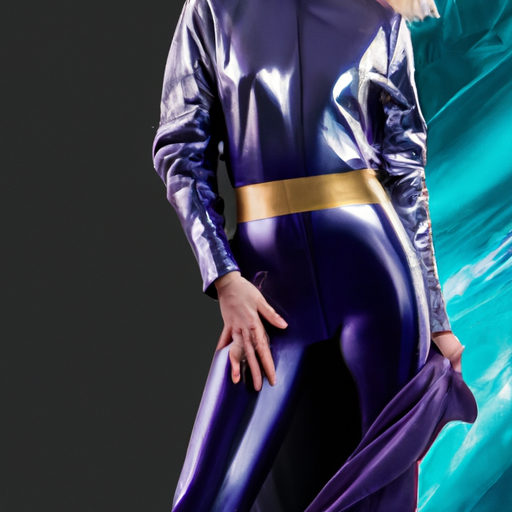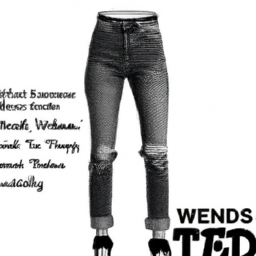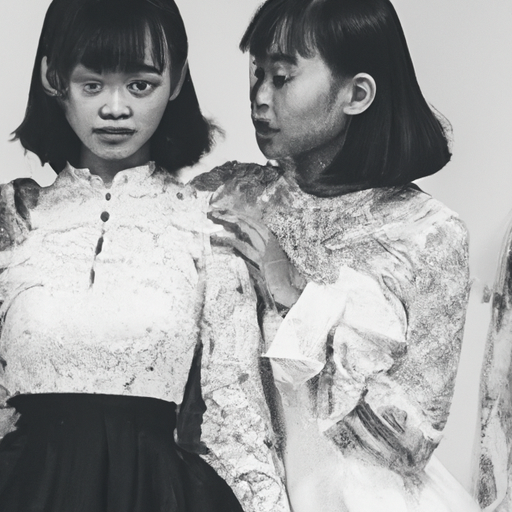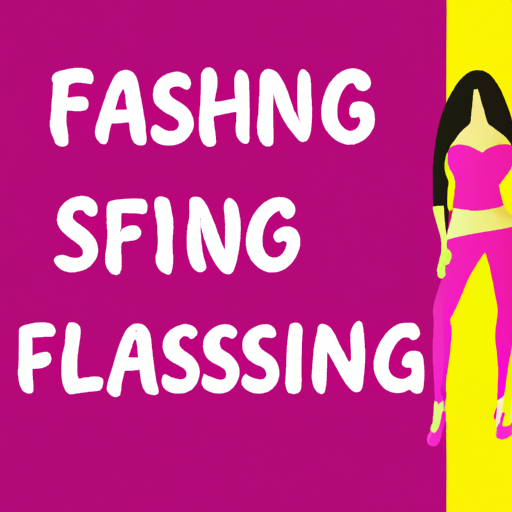1930s Fashion Trends
During the 1930s, fashion took a transformative leap, reflecting the tumultuous times of economic depression and social change. The era emerged with a distinct blend of glamour and practicality, redefining women’s fashion with sleek silhouettes, luxurious fabrics, and innovative designs. From bias-cut gowns that epitomized feminine elegance to tailored menswear-inspired suits that revolutionized women’s work attire, the fashion trends of the 1930s celebrated both style and functionality, leaving an indelible mark on the world of fashion.
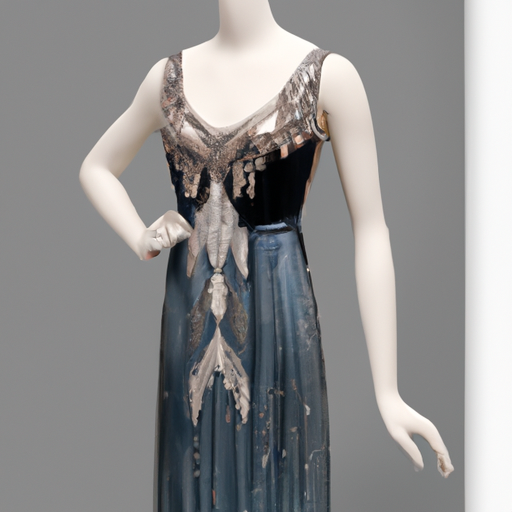
Table of Contents
1. Daytime Fashion
1.1 Everyday Dresses
When it comes to daytime fashion in the 1930s, everyday dresses were a staple for women. These dresses were typically made from lightweight and breathable fabrics such as cotton or rayon, allowing for comfort and ease of movement throughout the day. The popular silhouette for everyday dresses was the bias cut, which clung to the body and accentuated the natural curves of a woman’s figure. The hemlines of these dresses generally fell below the knee, and the necklines ranged from modest to slightly more daring, such as the v-neck or sweetheart neckline. Patterns and prints were also prevalent during this time, with floral designs and geometric shapes being particularly popular.
1.2 Separates
Another trend in daytime fashion during the 1930s was the rise of separates. Separates consisted of a coordinated top and bottom, allowing women to mix and match different pieces to create various outfit combinations. This offered versatility and flexibility in their wardrobe choices. Women could pair a tailored blouse with a high-waisted skirt or wear a blouse with wide-leg trousers for a more masculine-inspired look. Neutral colors such as black, navy, and beige were commonly seen in separates, but bold colors such as red and green were also embraced.
1.3 Sportswear
For those who led an active lifestyle or preferred a more casual look, sportswear became increasingly popular during the 1930s. Women began participating in activities such as tennis, golf, and swimming, which called for appropriate attire. Sportswear focused on comfort and functionality, with the use of lightweight fabrics and relaxed silhouettes. Tennis dresses with pleats and collars were a common choice, while golf outfits consisted of a collared polo shirt paired with a knee-length skirt. Swimsuits were modest and often featured ruching or ruffles to add a feminine touch. Women also started wearing comfortable and stylish sneakers or canvas shoes to complete their sportswear ensemble.
2. Eveningwear
2.1 Elegant Gowns
Evening events in the 1930s called for glamorous and sophisticated gowns. These elegant gowns featured lavish fabrics such as silk and velvet, adorned with intricate beading or embroidery. The preferred silhouette was sleek and form-fitting, with draping and bias cuts that accentuated the natural curves of a woman’s body. Necklines varied from plunging v-necks to modest boat necks, while sleeves ranged from sleeveless to long and sheer. The colors of choice for evening gowns were often deep jewel tones such as emerald green, sapphire blue, and ruby red, adding to the allure and richness of the overall look.
2.2 Bias-cut Dresses
Bias-cut dresses gained immense popularity during the 1930s. These dresses were cut on a diagonal angle, allowing the fabric to drape and cling to the body in a way that accentuated the feminine figure. The bias cut created a sleek and elegant silhouette, and the dresses often featured intricate details such as ruching, pleats, or decorative flower arrangements to add interest and depth. Bias-cut dresses were typically floor-length and made from luxurious fabrics such as satin or silk, making them a popular choice for eveningwear.
2.3 Evening Coats
To complement their evening gowns or dresses, women often wore evening coats to keep warm and add an extra layer of sophistication. Evening coats in the 1930s were typically long and made from luxurious materials like fur or velvet. They featured wide collars and intricate detailing, such as fur trims or decorative buttons. The coats were designed with a tailored fit, cinching at the waist to create a flattering silhouette. Black and jewel tones were common color choices for evening coats, adding a touch of elegance to any ensemble.
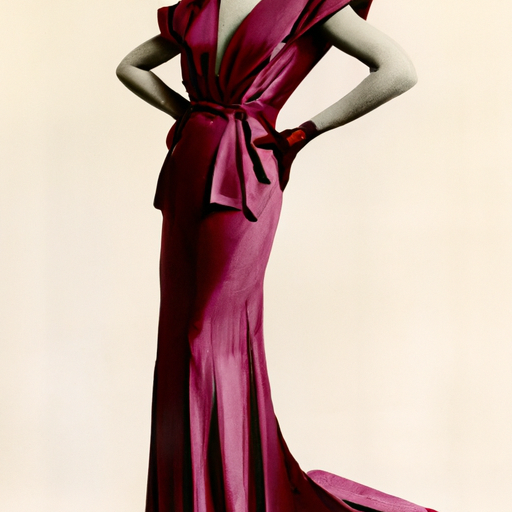
3. Accessories
3.1 Hats
Hats were an essential accessory during the 1930s and played a significant role in completing a woman’s look. Wide-brimmed hats, cloche hats, and berets were all popular choices. Wide-brimmed hats offered sun protection while exuding an air of elegance, while cloche hats, with their close-fitting and bell-shaped silhouette, became an iconic symbol of the era. Berets, on the other hand, offered a more relaxed and casual option. Hats were often adorned with ribbons, feathers, or decorative pins to add a touch of flair.
3.2 Gloves
No outfit was complete without a pair of gloves in the 1930s. Women wore gloves as a fashion statement, as well as for practical purposes. Gloves were made from various materials, including silk, leather, and lace, and came in a variety of lengths. Shorter gloves, reaching just below the wrist, were commonly worn during the daytime, while longer gloves that extended past the elbow were reserved for more formal occasions. Gloves were available in a range of colors, from classic white and black to vibrant shades that matched or complemented the outfit.
3.3 Handbags
Handbags became an essential accessory for women in the 1930s, serving both practical and fashionable purposes. The most popular styles were small to medium-sized handbags made from leather or fabric materials. These handbags featured a structured shape and often had a top handle for carrying. Some bags were embellished with decorative details such as beading, embroidery, or intricate clasps. The colors of handbags varied, with neutral tones like black and brown being common choices, but bolder colors like red or green were also embraced.
3.4 Jewelry
Jewelry played a vital role in accessorizing outfits during the 1930s. Statement pieces such as art deco-inspired necklaces, chandelier earrings, and cocktail rings were highly favored. Women embraced geometric shapes, intricate metalwork, and bold colors like emerald green and sapphire blue in their jewelry choices. Pearls, both real and faux, were also incredibly popular and could be seen adorning necklaces, bracelets, and earrings. Elegant brooches and hair accessories adorned with feathers or gemstones added a touch of glamour to women’s overall look.
4. Hairstyles
4.1 Finger Waves
One of the most iconic hairstyles of the 1930s was finger waves. This hairstyle involved creating wave-like ridges in the hair, usually starting from the roots and flowing towards the ends. Finger waves were achieved by using a finger or a comb and setting lotion to mold the hair into the desired shape. The waves were often worn close to the head, giving a sleek and polished appearance. Finger waves were popular for both short and long hair and were often paired with a decorative hair accessory, such as a hairpin or a feathered headband.
4.2 Marcel Wave
The Marcel wave was another popular hairstyle in the 1930s. This hairstyle involved creating deep waves or curls in the hair using a heated curling iron. The Marcel wave was a more voluminous and dramatic hairstyle compared to finger waves. It added texture and movement to the hair, giving a glamorous and sophisticated look. Marcel waves were often worn with the hair swept to one side or with bangs for added style. This hairstyle was particularly popular for evening events and paired well with the elegant gowns and bias-cut dresses of the era.
4.3 Updos
For a more formal and elegant look, updos were frequently worn in the 1930s. Updos involved gathering the hair and securing it into a bun or a chignon at the back of the head. Hair accessories such as jeweled hair combs or decorative clips were often used to add interest and glamour to the updo. Updos provided a polished and sophisticated appearance, perfect for evening events or when wearing an elegant gown. Women with shorter hair often opted for finger waves or Marcel waves instead of updos to create a similar effect.
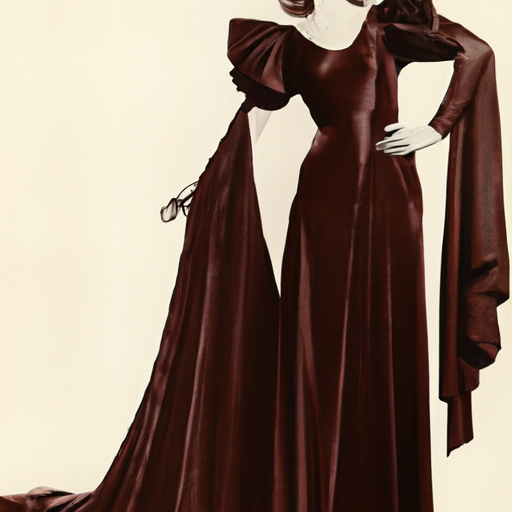
5. Makeup
5.1 Thin Eyebrows
Eyebrows played a significant role in shaping the face during the 1930s. Women often plucked their eyebrows thin and shaped them into a highly defined arch. Thin eyebrows were achieved by using a pencil or powder to fill in the eyebrows and create a precise shape. The arch of the eyebrow was typically positioned higher than its natural placement, giving a more sculpted and dramatic look. Thin, arched eyebrows were a distinguishing feature of the 1930s and added to the overall beauty aesthetic of the time.
5.2 Red Lips
Another prominent makeup trend of the 1930s was bold, red lips. Women embraced bold and vibrant red lipstick shades as a way to make a statement and exude confidence. Red lips were achieved by using lipsticks in shades of crimson, cherry, or ruby. The lips were typically shaped with a well-defined cupid’s bow and slightly overdrawn to create a fuller appearance. Soft and subtle eye makeup was paired with the bold lip, allowing the lips to take center stage. Red lips added a touch of glamour and sophistication to women’s overall look.
5.3 Natural Eye Makeup
While bold lips were a prominent feature in 1930s makeup, the emphasis on the eyes was more on creating a natural and soft look. Women wore neutral eyeshadow shades such as taupes, browns, and creams, which blended seamlessly with their skin tone. Mascara was sparingly used to enhance the length and thickness of the eyelashes, giving a subtle and fluttery effect. Eyeliner was applied close to the lash line, creating a defined yet understated look. The focus on natural eye makeup allowed the red lips to stand out and be the main focal point of the face.
6. Outerwear
6.1 Coats
Coats were a necessity in the 1930s to protect against the weather, and they also became an important fashion statement. Coats were typically knee-length or longer and made from warm and luxurious materials such as wool or tweed. The preferred silhouette was tailored and fitted, cinching at the waist to create an hourglass shape. Coats often featured fur trims, decorative buttons, or belted accents, adding a touch of elegance and sophistication. Neutral shades like black, brown, or navy were common choices for coats as they were versatile and could easily be paired with different outfits.
6.2 Fur Stoles
Fur stoles were a popular accessory in the 1930s, particularly for eveningwear. Women would drape fur stoles around their shoulders, adding a touch of luxury and glamour to their look. Stoles were often made from fur such as fox, mink, or rabbit, and came in various colors and patterns. They were typically worn with long evening gowns and tied or fastened in the front to keep them in place. Fur stoles not only provided warmth but also served as a statement piece, elevating the overall elegance of a woman’s ensemble.
6.3 Capes
For a more dramatic and whimsical outerwear option, capes were embraced during the 1930s. Capes were typically knee-length or longer and made from a variety of materials, including wool, velvet, or tweed. They often featured unique details such as intricate embroidery, fur trims, or decorative clasps. Capes were worn over dresses or suits, adding a touch of glamour and sophistication. The flowing silhouette of capes created a sense of movement and drama, making them a statement piece in any outfit.
7. Shoes
7.1 Art Deco-Inspired
Art deco-inspired shoes were a major trend in 1930s fashion. These shoes incorporated geometric designs, bold colors, and intricate details that reflected the art deco movement of the time. Shoes with low, chunky heels and rounded toes were popular choices for daytime wear, providing both style and comfort. Art deco-inspired shoes often featured decorative buckles, intricate cutouts, or contrasting patterns, adding visual interest and making them a standout accessory. They were the perfect complement to the sleek and sophisticated fashion trends of the era.
7.2 T-Strap Shoes
T-strap shoes were a staple in 1930s fashion, offering a combination of style and practicality. These shoes featured a strap across the front of the foot, creating a T-shaped design and securing the shoe in place. T-strap shoes were available in various heel heights, from low to high, and in a variety of materials, such as leather or suede. They were versatile and could be worn with a range of outfits, from everyday dresses to evening gowns. T-strap shoes added a touch of femininity and elegance to any ensemble.
7.3 Oxford Shoes
Oxford shoes became popular in the 1930s and were heavily inspired by men’s footwear. These lace-up shoes were characterized by their closed lacing system, low heels, and rounded toes. Oxford shoes were typically made from leather and came in various colors such as black, brown, or two-toned designs. Women paired oxford shoes with separates or tailored suits to create a more masculine-inspired look. Despite their menswear-inspired roots, oxford shoes offered a chic and polished touch to women’s fashion in the 1930s.
8. Men’s Fashion
8.1 Suits
Suits were a staple in men’s fashion during the 1930s. The popular silhouette for suits was characterized by wide shoulders, a nipped waist, and wide-leg trousers. Jackets often had a double-breasted design, adding a touch of sophistication and formality. Suits were typically made from wool or tweed, offering warmth and durability. The color palette for suits ranged from neutral tones like black, gray, or brown to bolder options such as pinstripes or plaids. Men paired suits with tailored shirts, ties, and dress shoes for a polished and put-together look.
8.2 Wide-Leg Trousers
Wide-leg trousers were a prominent feature in men’s fashion during the 1930s. These trousers had a loose fit through the hips and thighs, gradually widening towards the bottom. They were typically high-waisted and made from materials such as wool or tweed. Wide-leg trousers were often paired with suspenders or a belt to keep them in place. They provided a comfortable and relaxed alternative to the more form-fitting options of the previous decade. Wide-leg trousers added a touch of classic elegance to men’s fashion in the 1930s.
8.3 Fedora Hats
No men’s fashion ensemble in the 1930s would be complete without a fedora hat. The fedora hat featured a wide brim and a pinched crown, giving it a distinctive and iconic silhouette. Fedora hats were typically made from felt and came in various colors such as black, gray, or brown. Men wore fedora hats to complete their formal or casual looks, protecting themselves from the elements and adding a touch of sophistication to their overall appearance. The fedora hat became a symbol of the era and continues to be associated with the timeless style of the 1930s.
9. Swimwear
9.1 One-Piece Swimsuits
One-piece swimsuits were the go-to swimwear option for women in the 1930s. These swimsuits were modest and provided full coverage of the body. They typically had low backs, high necklines, and incorporated decorative elements such as ruching or ruffles to add a feminine touch. One-piece swimsuits were often made from materials such as cotton or wool, making them more practical and durable for swimming. They came in a range of colors and patterns, from classic black to playful polka dots, allowing women to express their personal style while adhering to societal modesty standards.
9.2 Beach Pyjamas
For a more relaxed and chic beachwear option, beach pyjamas gained popularity in the 1930s. Beach pyjamas were one-piece outfits that resembled loose-fitting trousers or wide-legged jumpsuits. They were made from lightweight and breathable fabrics such as silk or rayon, allowing for comfort in warmer weather. Beach pyjamas often featured vibrant prints and patterns, inspired by exotic destinations and tropical motifs. Women paired beach pyjamas with wide-brimmed sun hats and sandals or espadrilles, creating a fashionable and effortless beach-ready look.
9.3 Sun Hats
Sun hats were an essential accessory for women in the 1930s to protect themselves from the sun’s rays. Wide-brimmed sun hats were particularly popular, offering shade and elegance. These hats were typically made from straw or lightweight fabric and featured a floppy brim that provided ample coverage for the face and neck. Sun hats often incorporated decorative elements such as ribbons, flowers, or bows, adding a touch of femininity and style. The sun hat became a must-have accessory for trips to the beach or leisurely outdoor activities, completing the overall 1930s fashion aesthetic.
10. Influence of Hollywood
10.1 Glamorous Stars
The 1930s marked the golden age of Hollywood, and the glamorous stars of the silver screen influenced fashion trends of the era. Actresses such as Greta Garbo, Joan Crawford, and Marlene Dietrich captivated audiences with their beauty, poise, and style. Their on-screen personas and fashion choices inspired women’s fashion, with bias-cut dresses, elegant gowns, and statement accessories becoming popular among everyday women. Hollywood’s glamorous stars became fashion icons and symbolized the allure and sophistication of the era.
10.2 Movie Costumes
In addition to the influence of Hollywood stars, movie costumes played a significant role in shaping 1930s fashion trends. Period films like “Gone with the Wind” showcased extravagant and opulent costumes that depicted different historical eras. These costumes captured the imagination of the audience and sparked a fascination with romantic and timeless fashion. Elements from movie costumes, such as voluminous sleeves, empire waistlines, and draping fabrics, were incorporated into everyday dresses and evening gowns. Movie costumes ignited a sense of escapism and brought grandeur to fashion in the 1930s.
10.3 Celebrity Fashion Icons
Alongside Hollywood stars, other celebrities in the 1930s became influential fashion icons. Royals such as the Duchess of Windsor, Wallis Simpson, and socialites like Coco Chanel and Elsa Schiaparelli dictated trends with their impeccable taste and style. Their refined and polished look influenced the fashion choices of women around the world. Women aspired to achieve the elegance and sophistication of these celebrity fashion icons through careful selection of clothing, accessories, and hairstyles. The influence of these iconic figures further shaped the fashion landscape of the 1930s and created an enduring legacy.
